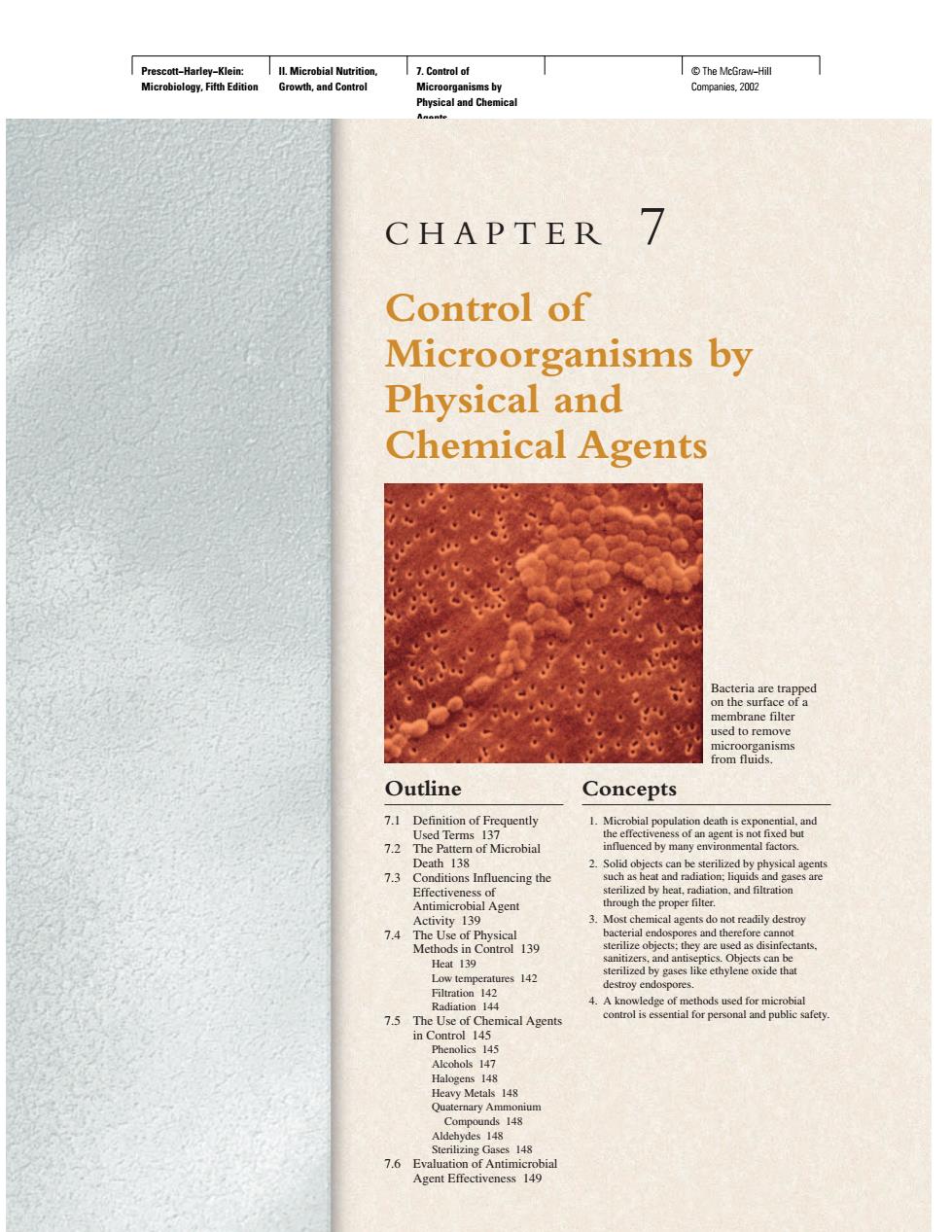正在加载图片...

n c CHAPTER 7 Control of Microorganisms by Physical and Chemical Agents Outline Concepts 72 of Microbial 7.3 Death 13 encing the I Agent Mo 74 7.5 The Use o nical Agents 48 “Prescott−Harley−Klein: Microbiology, Fifth Edition II. Microbial Nutrition, Growth, and Control 7. Control of Microorganisms by Physical and Chemical Agents © The McGraw−Hill Companies, 2002 CHAPTER 7 Control of Microorganisms by Physical and Chemical Agents Bacteria are trapped on the surface of a membrane filter used to remove microorganisms from fluids. Outline 7.1 Definition of Frequently Used Terms 137 7.2The Pattern of Microbial Death 138 7.3 Conditions Influencing the Effectiveness of Antimicrobial Agent Activity 139 7.4 The Use of Physical Methods in Control 139 Heat 139 Low temperatures 142 Filtration 142 Radiation 144 7.5 The Use of Chemical Agents in Control 145 Phenolics 145 Alcohols 147 Halogens 148 Heavy Metals 148 Quaternary Ammonium Compounds 148 Aldehydes 148 Sterilizing Gases 148 7.6 Evaluation of Antimicrobial Agent Effectiveness 149 Concepts 1. Microbial population death is exponential, and the effectiveness of an agent is not fixed but influenced by many environmental factors. 2. Solid objects can be sterilized by physical agents such as heat and radiation; liquids and gases are sterilized by heat, radiation, and filtration through the proper filter. 3. Most chemical agents do not readily destroy bacterial endospores and therefore cannot sterilize objects; they are used as disinfectants, sanitizers, and antiseptics. Objects can be sterilized by gases like ethylene oxide that destroy endospores. 4. A knowledge of methods used for microbial control is essential for personal and public safety